
TIEF IN DER COMMUNITY
Black Diamond Athletin Angela Hawse ist eine Wegbereiterin für Veränderung.
Du hast schon ein Konto?
Melde dich an, um schneller auszuchecken.
Add 100 EUR more to quality for free Shipping!
€0,00 EUR
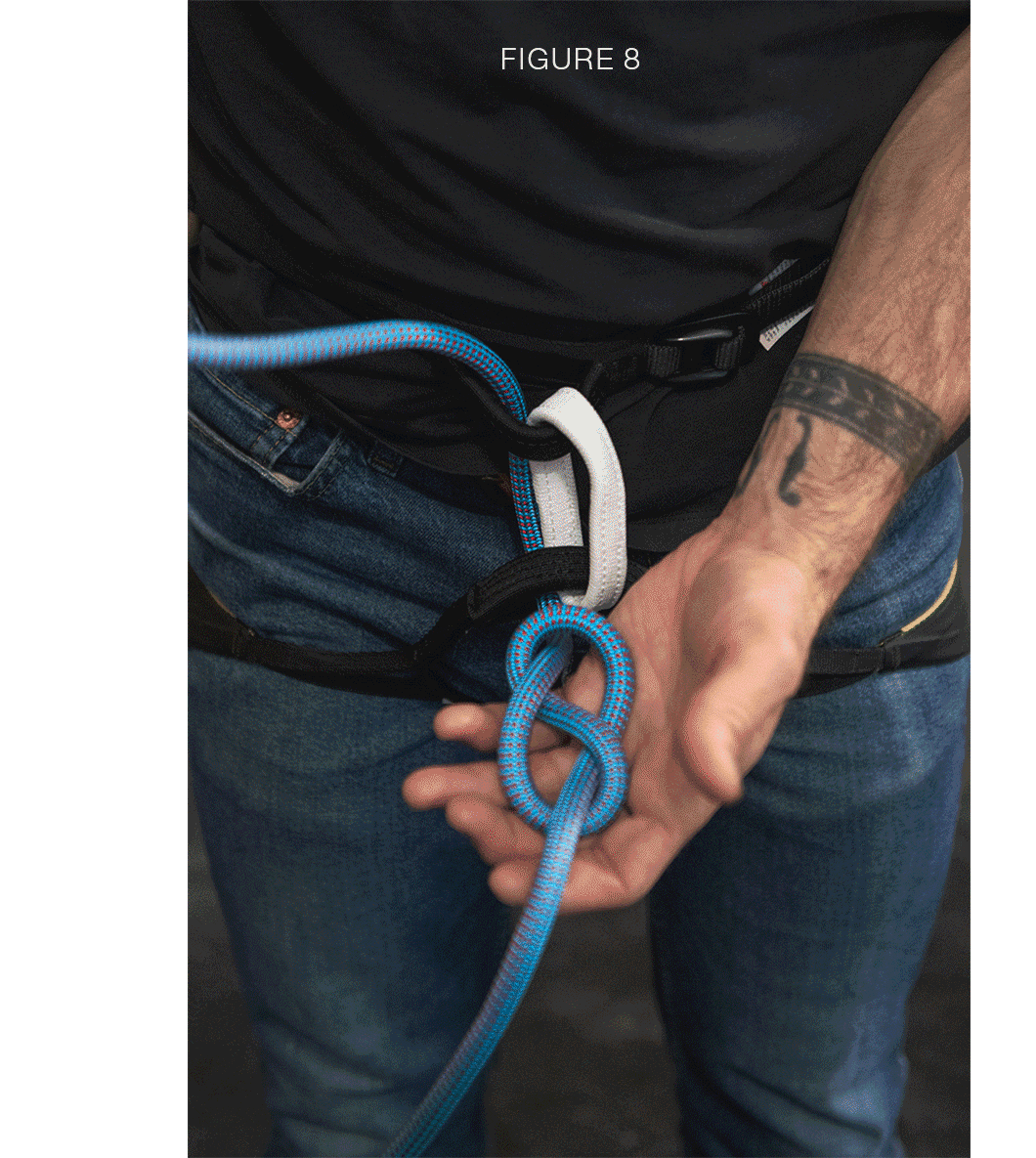
Das könnte die umstrittenste Abhandlung in der Klettergeschichte sein. Voll von altbekannten Stereotypen und Legenden wurde dieses Thema seit Jahrzehnten eifrig bei Lagerfeuern, am Felsen, in Blogs und natürlich in den SuperTopo-Foren diskutiert.
Der alte Spruch besagt, dass der Achterknoten visuell leichter zu überprüfen ist, was ihn sicherer macht, während der doppelte Palstek nach einem Sturz leichter zu lösen ist. Das bringt uns zurück zu diesen beiden Stereotypen.
Zuerst haben wir den verkrusteten Tradster. Du weißt schon, Malerhosen, gestreiftes T-Shirt, komischer Tiroler Hut, altmodische Werte. Dieses Lager passt definitiv zum erprobten Klassiker Acht. Wenn es nicht kaputt ist, wirst du es nicht reparieren.
Als nächstes haben wir den Sport-Jockey. Er tut alles, um den Gnar zu meistern – diese leistungsorientierte Crew bindet ihre flossy 8.9er mit einem Doppel-Bowline. Wer kann schon einen festgezogenen 8 entknoten, wenn du nach einem Punt vom ol’ proj total erledigt bist?
Aber haben diese Klischees wirklich etwas dran? Und ist der double bowline wirklich der bevorzugte Knoten für Sportkletterer, während der figure 8 für alle anderen weiterhin der altbewährte Klassiker bleibt?
Wir haben uns entschieden, ein paar zu fragen Black Diamond Athleten und hol' ein richtiges Schwergewicht in diese Debatte.
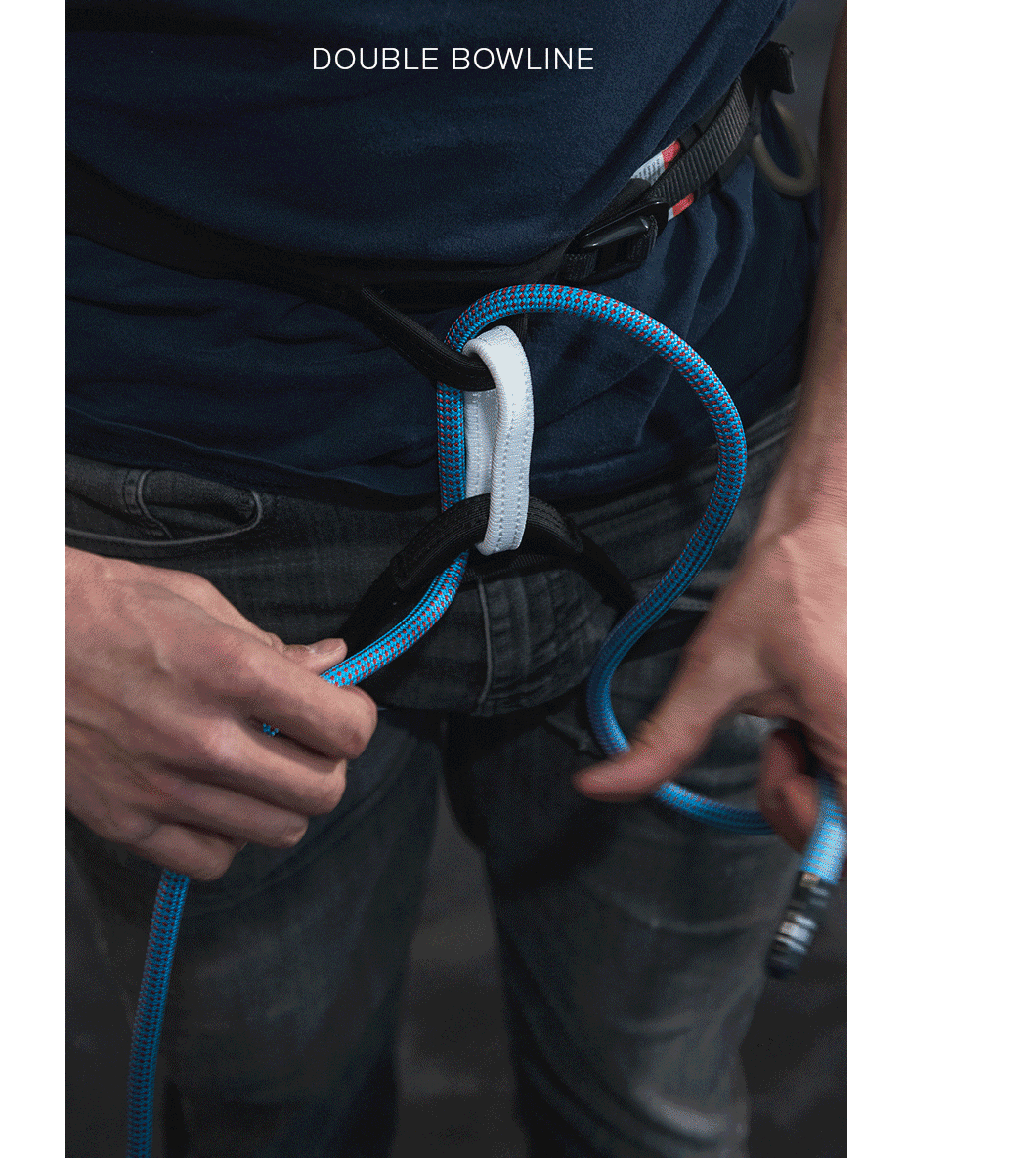
An erster Stelle stand der next-level Trad-Kletterer Connor Herson. Ehrlich gesagt, ist Connor so vielseitig wie ein Toyota Previa, aber er ist vielleicht am besten dafür bekannt, beim free climbing Widgets zu platzieren. Die Nase (VI 5.14a) am El Cap mit 15 und sende Empath (5.14d) on gear. In eine Kletterfamilie hineingeboren verkörpert Connor den altmodischen Stil mit einem modernen Touch.
Also, kannst du erraten, welchen Knoten er bevorzugt?
„Immer Figur 8“, sagt diese wortkarge ropegun. „Viel einfacher, es nochmal zu überprüfen.“
OK, passt.
Lass uns mal was anderes ausprobieren und schauen, was Wettkampf-Queen Natalia Grossman als Nächstes vorhat. Als Weltcup-Teilnehmerin hat Natalia das gläserne Dach für Amerikaner durchbrochen, indem sie 2021 IFSC-Bouldering-Weltmeisterin wurde – und 2022 hat sie es erneut geschafft. Sie ist auch im Lead aktiv und in ihrer Freizeit hat sie draußen sogar eine 5.14b geklettert. Also, womit passt Natalia, das Paradebeispiel des modernen Kletterns, zusammen?
„Figure 8, weil mir nie etwas anderes beigebracht wurde.“
Und sie fügt hinzu: Also, der doppelte Palstek ist in Wettkämpfen nicht erlaubt.
Ah, jetzt gibt’s einen kleinen Widerspruch zu den klassischen Klischees der Knotenbinder. Keine double bowlines für die Wettkampf-Dominatoren im Sportklettern? Interessant...
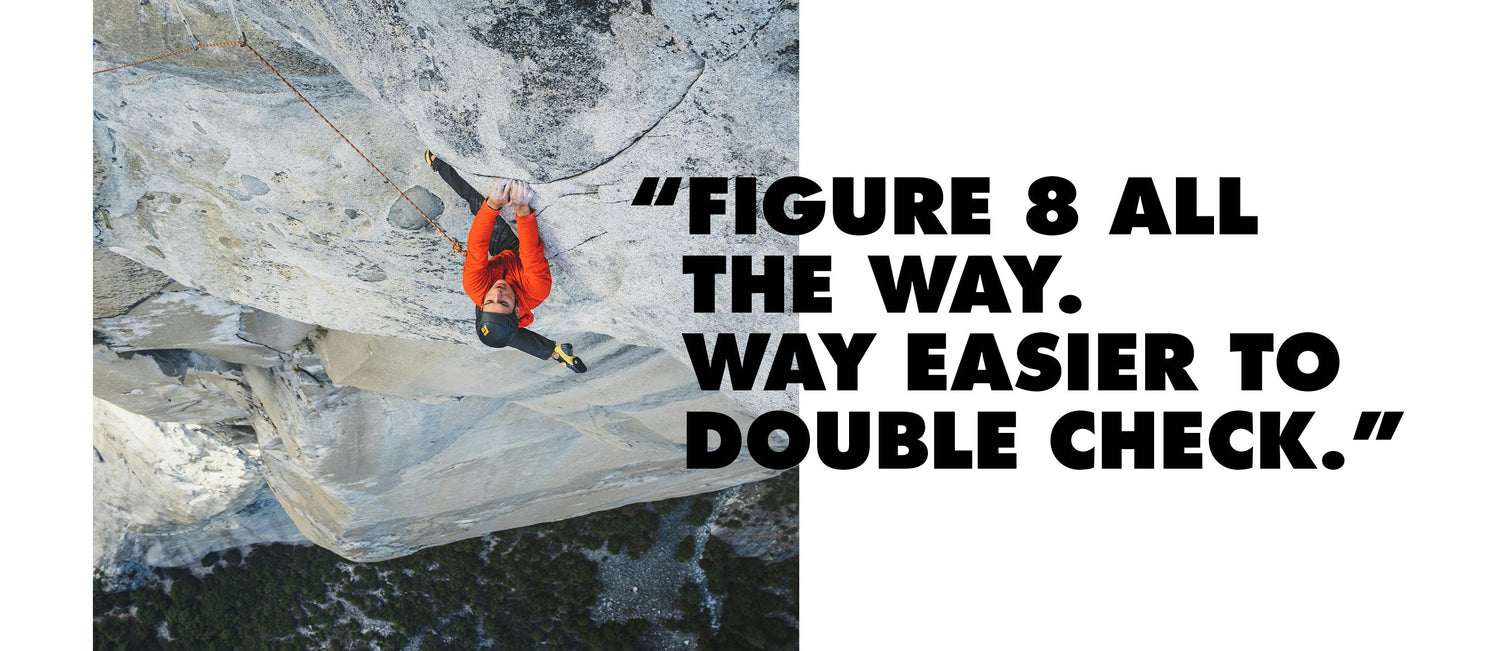
Top of the list was next-level trad climber Connor Herson. In truth, Connor is as versatile as a Toyota Previa, but he’s perhaps best known for placing widgets while free climbing The Nose (VI 5.14a) on El Cap at age 15 and sending Empath (5.14d) on gear. Born into a climbing family, Connor embodies old-school style with a modern slant.
So, can you guess which knot he prefers?
“Figure 8 all the way,” says this reticent ropegun. “Way easier to double check.”
OK, checks out.
Let’s switch it up and see what comp queen Natalia Grossman ties in with. As a world cup competitor, Natalia smashed the glass ceiling for Americans by becoming the IFSC bouldering world champion in 2021. Then, she did it again in 2022. She’s also competitive on the lead circuit, and in her down time has climbed 5.14b outside. So, what does Natalia, the epitome of new-school, tie in with?
“Figure 8, because I’ve never been taught anything else.”
And she adds: “Also, the double bowline isn’t allowed in comps.”
Ah, now there’s a little nugget of contradiction for the classic stereotypes of knot tiers. No double bowlines for the sport climbing comp crushers? Interesting...
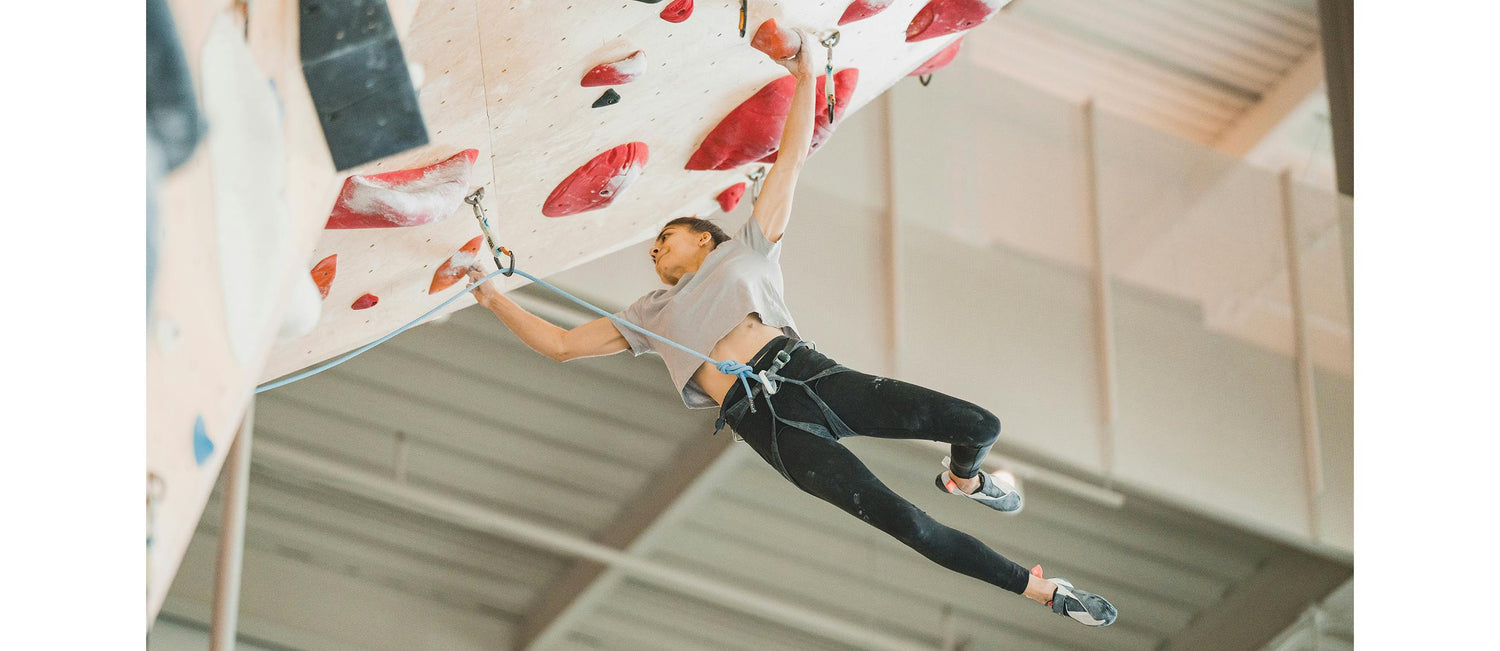
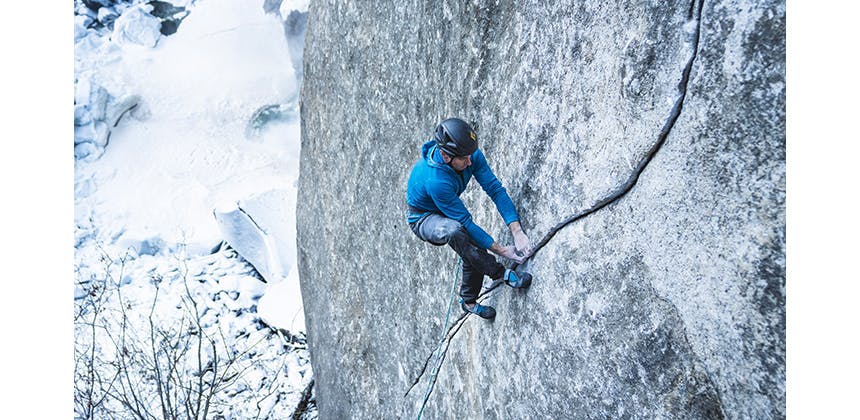
For Carlo Traversi—who climbed both 5.15b sport AND 5.14+ trad just last year—the figure 8 is again the choice du jour.
“I use a simple Figure 8 with no backup knot and no finish,” says Carlo. “I've never had issues with the tail getting in my way and I've always appreciated how simple it is to visually check the knot.”
That said, Carlo wasn’t always on the 8 train.
“I used a double bowline for a few years when I was younger, but I felt like it was harder to visually inspect and sometimes it would loosen up more than I was comfortable with,” says Carlo.
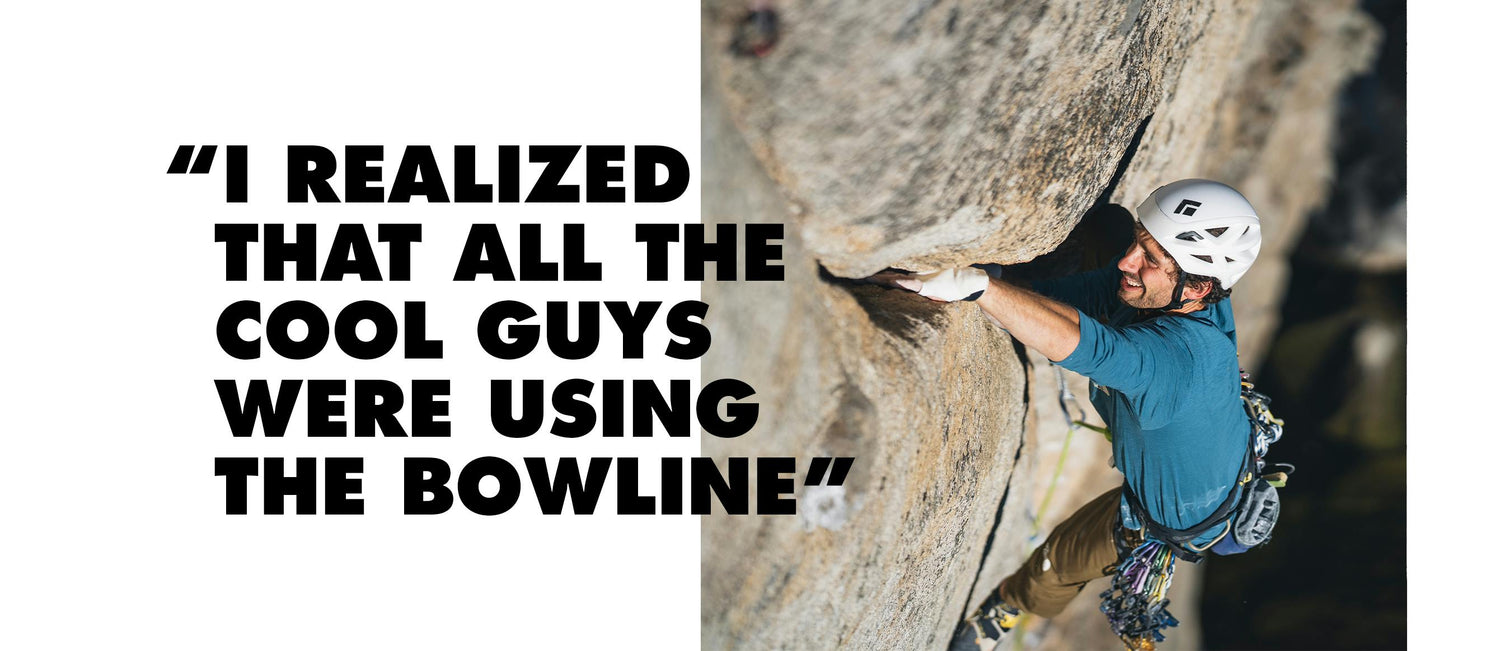
Recent Reel Rock stars, andfirst to free repeat Magic Mushroom, Jacopo Larcher and Babsi Zangerl were next on our list. As one of the most successful big wall teams to ever rope up together we figured (pun intended) that the 8 would also be their knot of choice.
Jacopo chimed in first:
“Well, I actually do both,” he explained. “I tie in with a double bowline on single pitches (sport and trad), but with a figure 8 on multi pitch/bigwalls and/or when I use double ropes.”
As a man who’s climbed both 5.15 sport and 5.14+ on gear (and possibly 5.15 trad with his ascent ofTribe), it makes sense that he’s equally comfortable with both knots. And his application for each style of climbing is a testament to his virtuosity. But according to Jacopo, his whole bowline infatuation started because he simply wanted to becool.
“When I started climbing, I used to always tie in with a figure 8, as that’s how I was taught … but later on I realized that all the cool guys were using the bowline, especially one mountain guide and mentor I’d been looking up to. So, I switched to the bowline too!”
“I didn’t ask anyone as I didn’t want to be the one who didn’t know how to do it.”
But Jacopo’s quick to point out:
“Now, I don’t use it anymore because it’s ‘cool,’ but because it’s way easier to untie if you take big falls and it causes less damage to the tie-in points of the harness.”
As for the figure 8, he elaborates:
“With double ropes I tie in with the figure 8 as two double bowlines would barely fit in the tie-in points of the harness. On big walls I use the figure 8 for the same reason, as I mostly also have a daisy chain on my harness, and I’m worried it could partially untie while being so long on the wall (especially with hauling).”
As for Babsi, Jacopo’s partner both on the wall and off, she’s a little less fluid when it comes to tying the knot …ehem!
“I tie in with a figure 8,” says this El Cap crusher and recent flasher of Nameless Tower’sEternal Flame. “This is the knot my brother showed me on my first climbing day when I was 14 years old.”
As to Jacopo’s easy going knot swinging ways?
“When I started dating Jacopo I changed to the bowline,” says Babsi. “I then had a bad experience on a big wall with it, so got back to the 8 again.”
Bad experience???
“The bowline opened halfway—after half day of climbing,” she explained. “Saw it very late and was scared.”
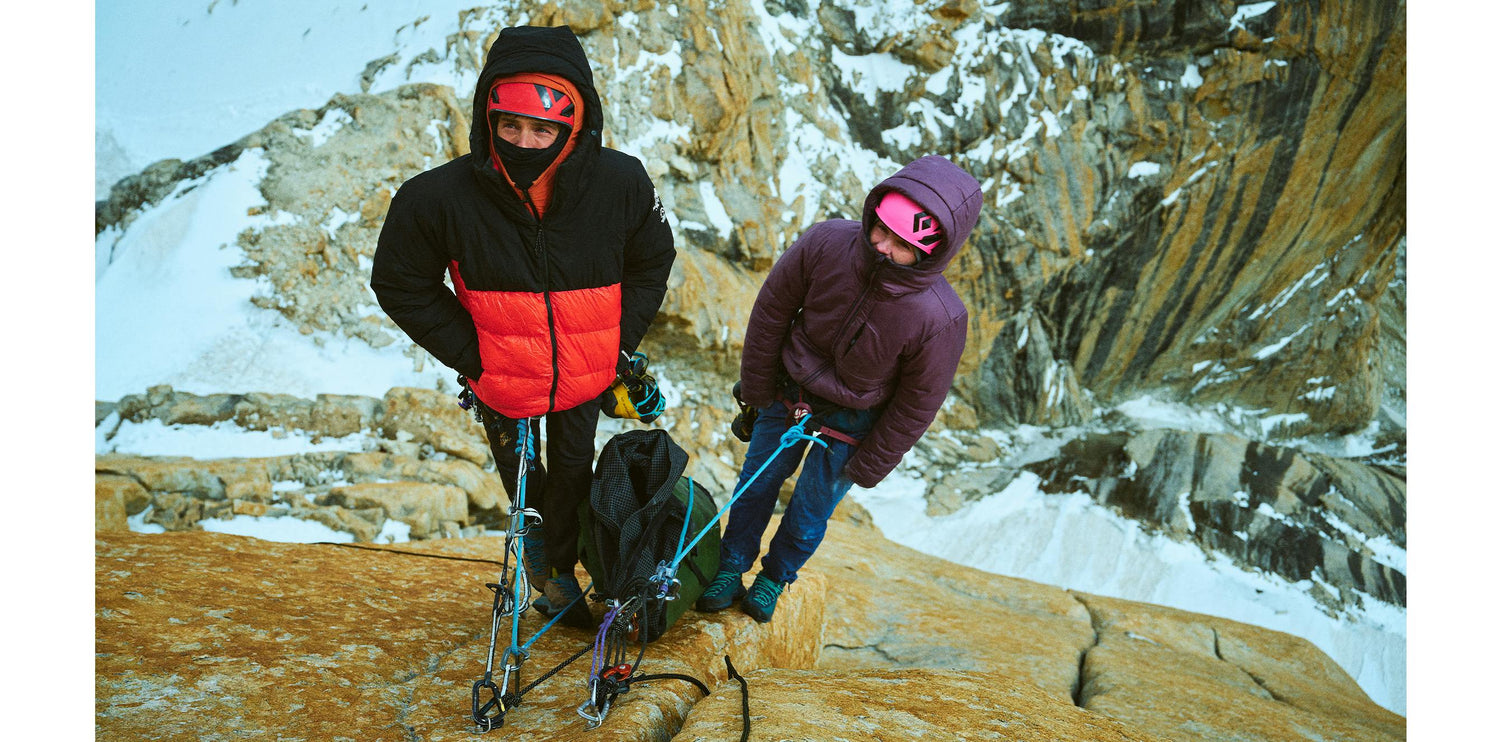
So, therein lies the rub with the double bowline. According to our QC Lab manager and all-around mountain hardman Matt Berry, the double bowline “is great/advantageous for people working routes where you are going to be weighting the rope a lot/ falling/ dogging since it’s super easy to untie.”
But, he adds, “the double bowline needs to be pre-tightened and dressed well and can come loose in some situations.”
In Berry’s expert opinion, the 8 is the way.
“I don’t think the difficulty of untying a figure 8 after it’s been weighted is that bad ... it’s way easier to inspect and it self-tightens and doesn’t loosen with repeated loads.”
As for our inveterate gear guru Kolin “KP” Powick, he points out:
“Super easy to untie—isn’t that counter to the whole point of tying-in in the first place?
That’s my biggest argument to people that say the bowline is easy to untie,” says KP.
“I mean it’s not like I’ve ever seen someone walking around with their harness on and a bunch of ends of ropes still tied into their tie-in points that they had to cut because the figure 8s were too hard to untie.”
But he’s quick to add that whether it’s an 8 or a double bowline, both knots require visual inspection and can both come untied if not finished correctly.
“In the end, it doesn’t matter what you’re tying in with—always check your knot before you leave the ground.”
So, there you have it. While both knots work well when dressed and tied correctly, it seems the 8 is predominantly the method of choice when polling the BD athlete team. As for those stereotypes? Well, there was one more person to ask …
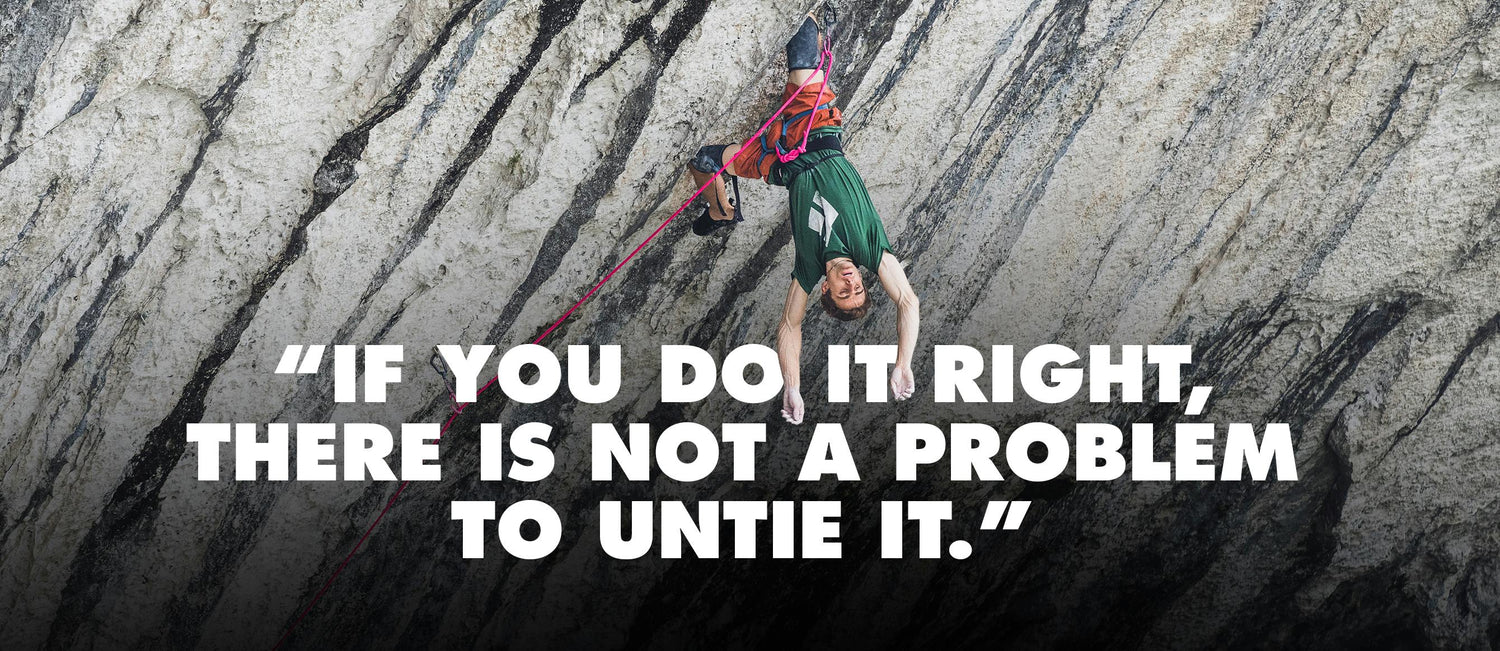
Arguably the best sport climber alive, Seb Bouin, is a purist when it comes to his style of climbing—meaning he solely focuses on trying to establish and climb the world’s hardest bolted king lines. Plus, he’s French, so surely, he’s a bowline guy, right?
“I am doing a figure 8,” says Seb. “Just because I started with this one and never changed it.”
And for someone who takes massive whips on the reg, he adds:
“If you do it right, there is not a problem to untie it.”
So, the guy who climbs 5.15d doesn’t have much trouble untying an 8. Fair enough.

Black Diamond Athletin Angela Hawse ist eine Wegbereiterin für Veränderung.

Stell dein Setup für die nächste Skitour perfekt ein.

Begleite BD-Athlet Yannick Glatthard tief in die Schweizer Alpen, während er seine Heimatberge mit guten...
Begleite BD-Athlet Yannick Glatthard tief in die Schweizer Alpen, während er seine Heimatberge mit guten Freunden teilt.

Begleite Dorian Densmore und Mya Akins durch eine weitere Wintersaison voller steiler Alaska-Spines, versteckter Backyard-Couloirs...
Begleite Dorian Densmore und Mya Akins durch eine weitere Wintersaison voller steiler Alaska-Spines, versteckter Backyard-Couloirs und tiefer Abenteuer in den Bergen.

Wir bringen Licht ins Dunkel, wenn’s um Stirnlampen geht.

Schau dir an, wie BD-Athlet Alex Honnold hoch über Tahoe beim harten Trad-Klettern alles gibt.


Unverzichtbare Bekleidung für den Herbst.

2012 haben Filmemacher und Fotograf Ben Ditto und Profikletterer Mason Earle eine makellose Linie im...
2012 haben Filmemacher und Fotograf Ben Ditto und Profikletterer Mason Earle eine makellose Linie im Hochland von Tuolumne eingerichtet. Doch ihre Versuche, die Route frei zu klettern, wurden jäh gestoppt, als sich Masons Leben komplett veränderte. Mit Unterstützung von Connor Herson fanden Ditto und Mason einen Weg, den Traum von dieser Kletterausrüstung weiterleben zu lassen.
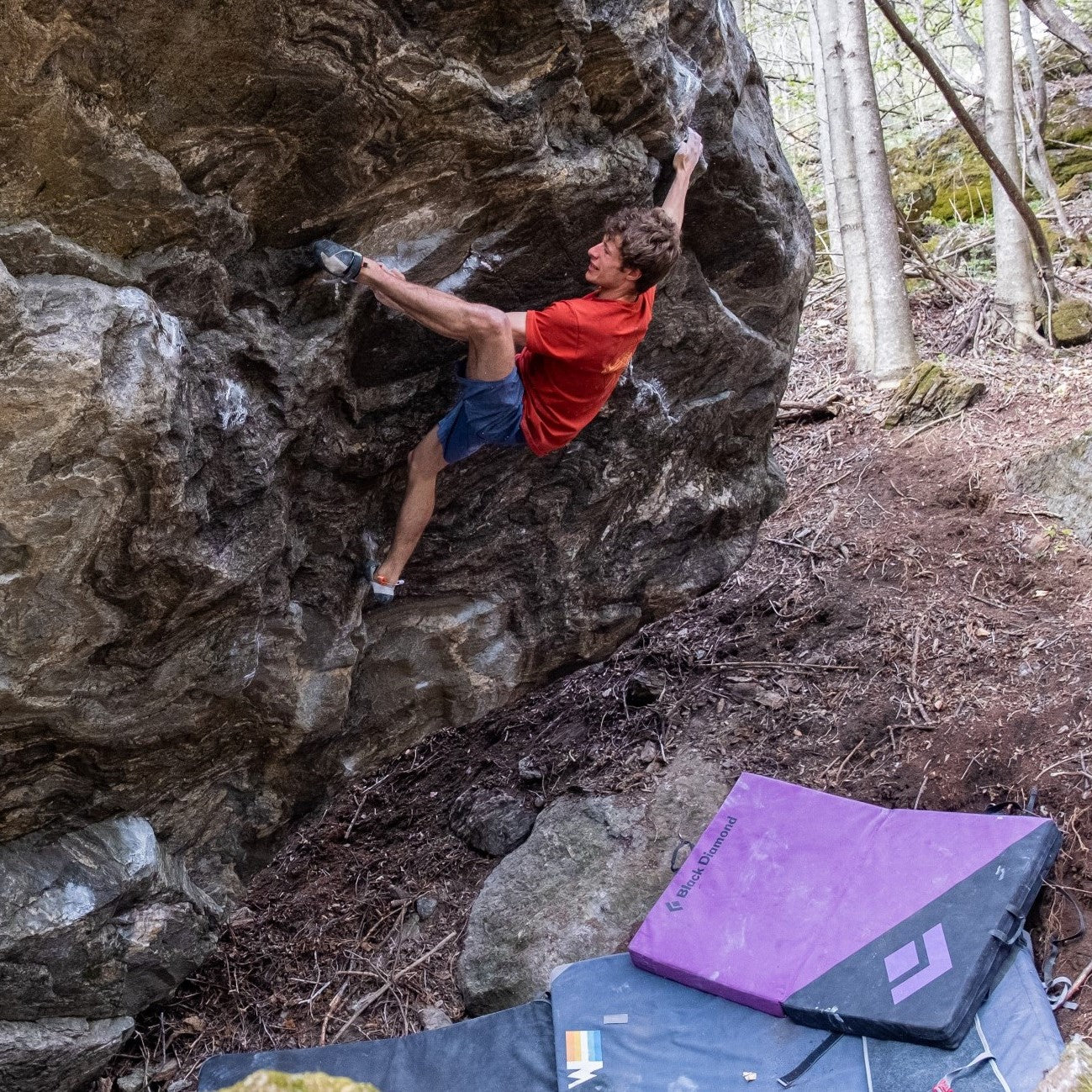

Schau zu und lerne, wie unser Field Test Coordinator dir Schritt für Schritt zeigt, wie...
Schau zu und lerne, wie unser Field Test Coordinator dir Schritt für Schritt zeigt, wie du jedes STS-Style Black Diamond Fell zuschneidest und montierst.


Jede Kletterin und jeder Kletterer hat diese Linien, von denen man träumt. Mal inspirieren sie...
Jede Kletterin und jeder Kletterer hat diese Linien, von denen man träumt. Mal inspirieren sie dich, mal lassen sie dich nicht los—und manchmal beides. Genau diese Projekte bringen uns dazu, über uns hinauszuwachsen und zeigen uns, wer wir wirklich sind. BD Ambassador Ethan Salvo hat kürzlich sein ganzes Leben umgekrempelt, um sich auf zwei Routen zu konzentrieren, die ihn ins Unbekannte gezogen haben—mit nur einem Ausweg: ganz nach oben. Hier erzählt er, wie er Dreamcatcher geknackt und als erster Kanadier in einer Woche ein V16-Problem gelöst hat.

BD-Athlet Connor Herson hat diesen Frühling so viele Wochenenden wie möglich im Valley verbracht –...
BD-Athlet Connor Herson hat diesen Frühling so viele Wochenenden wie möglich im Valley verbracht – trotz eines harten Quartals an der Stanford. Sein Ziel? Ground-up-Begehungen an einem Tag.
